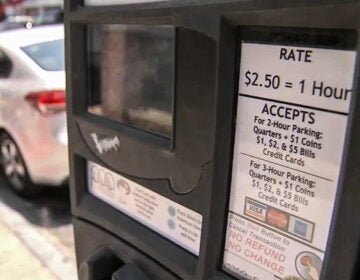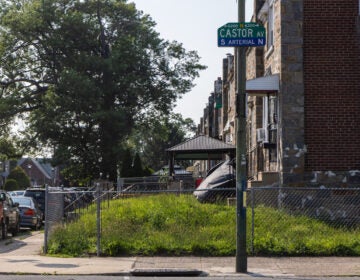Regional Rail soon no longer a numbers game

By Anthony Campisi
For PlanPhilly
With less than a month to go before regional rail numbers disappear forever, PlanPhilly sat down with SEPTA communications director Elizabeth Mintz, who’s in charge of the transition, to talk about what transit riders should expect to see going forward.
Starting July 25, all regional rail lines will be renamed after their terminal points. Thus, the R5 will become the Paoli/Thorndale and Doylestown lines. Because of the popularity of the Manayunk train station, the R6 Norristown line will be renamed the Manayunk/Norristown line.
By July 25, the Center City stations will be fully rebranded according to the new naming convention — all maps, signs and automated station announcements will be changed.
The Center City station displays will show train numbers where the r-designation currently is displayed.
Placards on regional rail trains are also being revamped. They will show the direction the train is traveling: A train with an “R7 Trenton” placard today will have a “Center City to Trenton” placard after the change. Conductors will change placards to show the outbound destination of their trains when they enter Center City or stop at the Temple University or University City stations.
The new Silverliner V regional rail cars will have digital displays that will follow these new naming conventions.
Though Mintz maintained “the regular rider is not going to be impacted by this” because their commuting routines don’t depend on SEPTA signage, customer service agents will be on hand to direct confused riders. They will also be handing out new schedules — that will also go into effect July 25 — and answering any questions riders have during the transition.
Those schedules have been redesigned. All the stations on a given line will be on the front page of the line’s timetable, and through service past Center City will be indicated at the bottom of each train’s entry. Information on station amenities will also be moved to a more central spot on the timetable, and shaded areas designating peak-hour trains will be eliminated because the authority is getting rid of the weekday, off-peak fare for regional rail on July 1.
Change will come more slowly to outlying stations and to maps in SEPTA’s vehicles. The authority is printing 3,000 system maps for transit stations and hundreds more that will go on its vehicle fleet, but they will be distributed gradually.
Mintz didn’t have a firm date for when the new maps will be fully in place, saying it depends on the number of workers SEPTA has available to put the new signs in place. SEPTA workers will also be going to outlying regional rail stations and putting a sticker over the regional rail number on station signs that aren’t already being replaced as part of station renovation projects.
Mintz said she’s not concerned that the maps won’t be distributed in time for the July 25 changeover, arguing that most confused riders today are in Center City. She said passengers heading in from outlying stations will be easily able to figure out how to take a train into Center City.
The maps SEPTA workers will be pasting on station platforms will also include the Route 15 trolley to provide a complete “steel-wheel” representation of the system. The suburban trolley lines will also be colored green as part of a long-term SEPTA effort to standardize name and color conventions across different modes of transit.
Though the new map will include transfer information to the River Line at Trenton, it won’t include information about transferring to the River Line at the Walter Rand Transportation Center in Camden. It also won’t include the Atlantic City Line, a New Jersey Transit train line that runs from 30th Street Station to Atlantic City. Mintz said the line won’t be visually represented because SEPTA’s map is already complex. Adding a new line, she said, would just add to the confusion.
Mintz couldn’t quantify the total cost of the changeover because many parts of it are being covered using other funds. Federal stimulus dollars are paying for new signage at regional rail stations getting renovations, for instance. Titan Outdoor LLC, SEPTA’s agent in its recent deal to rename the Pattison Avenue subway station AT&T station, is covering the cost of printing any of the new signs with AT&T’s name on it. That move alone saved SEPTA about $200,000, Mintz said, because it includes the maps at most stations, on the Broad Street Line and on all modes of transit with full system maps. (Buses, the suburban trolley lines and the Norristown High Speed Line don’t have complete system maps with the AT&T station stop shown.)
She said the new Center City signage and the maps SEPTA has to pay for will probably cost about $50,000, though she wasn’t able to put an estimate on the installation costs.
The regional rail numbering change is only one part of a larger SEPTA effort to make the system more rider-friendly. The authority is also consulting with local elected officials about renaming several stations on the suburban trolley lines to tie the station names into local streets or geographic markers. The final decision on those name changes should be made in the next month.
And while SEPTA updated automated announcements on the Market-Frankford El several months ago, the authority is in the process of recording new messages on the Broad Street Line that will take into account changes in area attractions.
Mintz also said the infamous “doors closing” announcement will be re-recorded. The announcement was digitally shortened by SEPTA after it was recorded, leading to the strange intonation.
Contact the reporter at acampisi@planphilly.com
WHYY is your source for fact-based, in-depth journalism and information. As a nonprofit organization, we rely on financial support from readers like you. Please give today.






